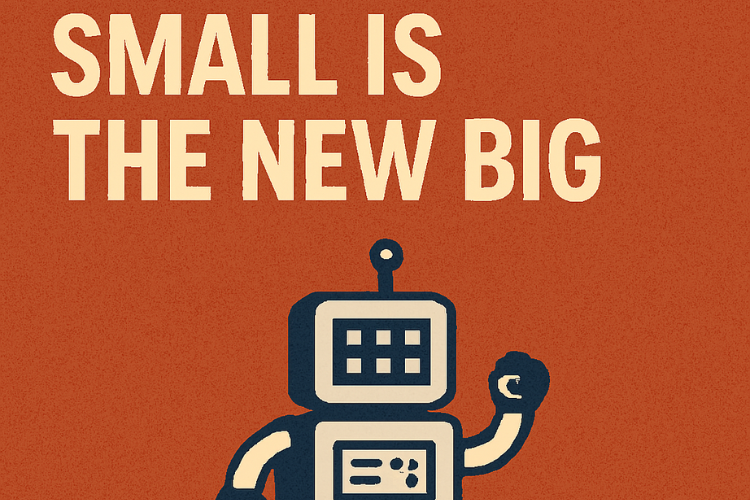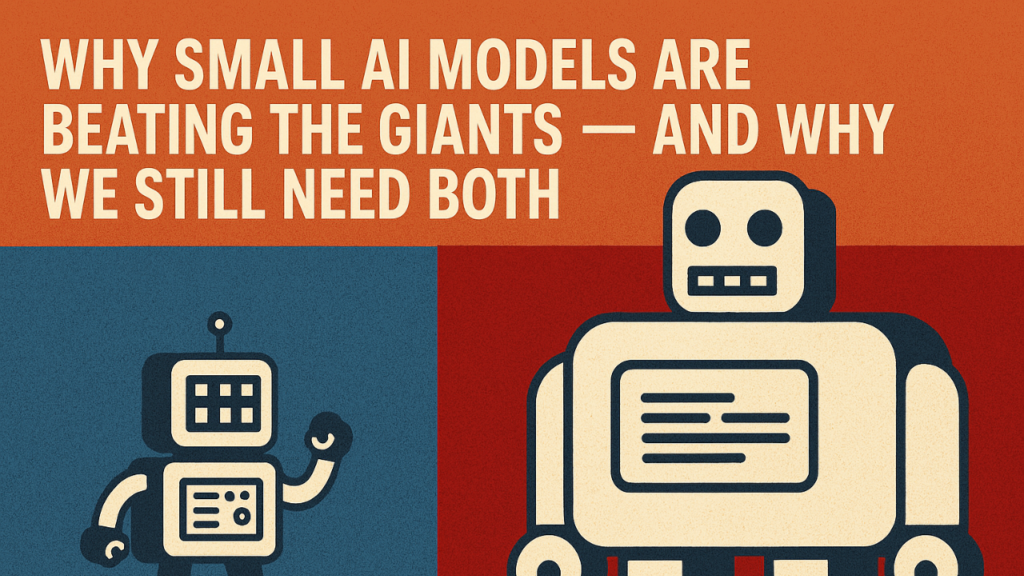1. Introduction: The AI Arms Race
In the world of artificial intelligence, everyone is focused on big models. They dominate headlines, grab attention, and promise revolutionary capabilities. But here’s what few people are talking about: small, specialized models are quietly winning in real-world applications.
After 25 years of building software systems, I can confidently say the future belongs to efficient models. These models are faster, cheaper, and often more accurate for specific tasks. Yet, these small models wouldn’t exist without their massive predecessors. It’s a relationship that deserves deeper exploration.
2. The Tank vs. Motorcycle Analogy
Let’s put it simply. Using a massive AI model to solve a specific problem is like bringing a tank to a street race. Sure, the tank is powerful. But if your goal is speed and agility, a motorcycle makes more sense.
In real-world AI applications, small models are proving to be more effective. They load faster, require fewer resources, and offer better performance in focused tasks. Think about customer service bots, voice assistants, or embedded systems. These don’t need the power of a trillion-parameter model. They need to be smart, fast, and lean.
Businesses are realizing this. They want tools that solve their problems, not just impress with size. And that’s where small models shine.
3. Why We Still Need the Giants
But don’t count out the big models just yet. They are essential to the AI ecosystem.
Massive models like GPT-4 or Grok 3 are like research labs. They explore new ideas, test new architectures, and push the boundaries of what’s possible. Their training processes lead to innovations in model design, optimization, and understanding.
These breakthroughs then trickle down. Developers and researchers take what works from large models and apply it to build smaller, more efficient versions. Without the giants leading the charge, we wouldn’t have the insights needed to make leaner models effective.
4. The Space Exploration Analogy
Consider how space exploration evolved. NASA used enormous rockets to get humans to the moon. These missions were costly and complex, but they opened the door to space.
Today, smaller and cheaper rockets are making space travel practical. Companies like SpaceX use lessons from NASA to build reusable rockets that are efficient and scalable.
The same thing is happening in AI. Large models blaze the trail. Small models make that journey accessible.
We are in the era of AI becoming practical for everyone. And it’s thanks to both ends of the spectrum working together.
5. The Grok 3 Drop: What It Means
xAI recently announced Grok 3. It is a powerful family of language models trained using around 200,000 GPUs in a massive data center in Memphis. The release showcases just how far large-scale AI has come.
Here’s what’s in the Grok 3 family:
- Grok 3 Mini: Responds quickly, trades a bit of accuracy for speed.
- Grok 3: Outperforms GPT-4o in several benchmark tests.
- Grok 3 Reasoning: Strong in logic, problem-solving, and comprehension.
- Grok 3 Mini Reasoning: Combines speed with advanced reasoning.
Premium+ subscribers on X are the first to experience Grok 3. These models show what big tech can achieve with massive resources. But they also raise a question: is this always the best tool for the job?
6. The Hidden Trend: Small is the New Big
There’s a trend most people aren’t talking about. While big models capture attention, small models are making a bigger impact.
In many companies, leaders are investing millions into deploying large models. But in many cases, a smaller model could do the job better. Small models are:
- Easier to deploy
- Less expensive to run
- More responsive in real-time applications
- Easier to fine-tune for specific domains
From medical devices to on-device translation and autonomous drones, compact AI models are leading the charge. They’re designed for the real world, not just benchmark tests.

These models may not win every competition, but they win where it matters: speed, cost, and relevance.
7. Conclusion: Finding the Balance
We don’t need to choose between large and small models. We need both.
Massive models help us dream big. They teach us new methods and break technical barriers. Small models help us act fast. They take those discoveries and turn them into usable tools.
Just like NASA and SpaceX shaped modern space travel, big and small AI models are shaping our intelligent future.
At the intersection of innovation and practicality is where the real magic happens. And that’s the lesson the AI world needs to embrace.
Whether you’re building the next unicorn startup or deploying AI in the field, it’s time to look beyond the hype. Sometimes, a motorcycle will win the race.
Want more insights like this? Follow StartupHakk – where we break down big tech trends into real-world applications that matter.




